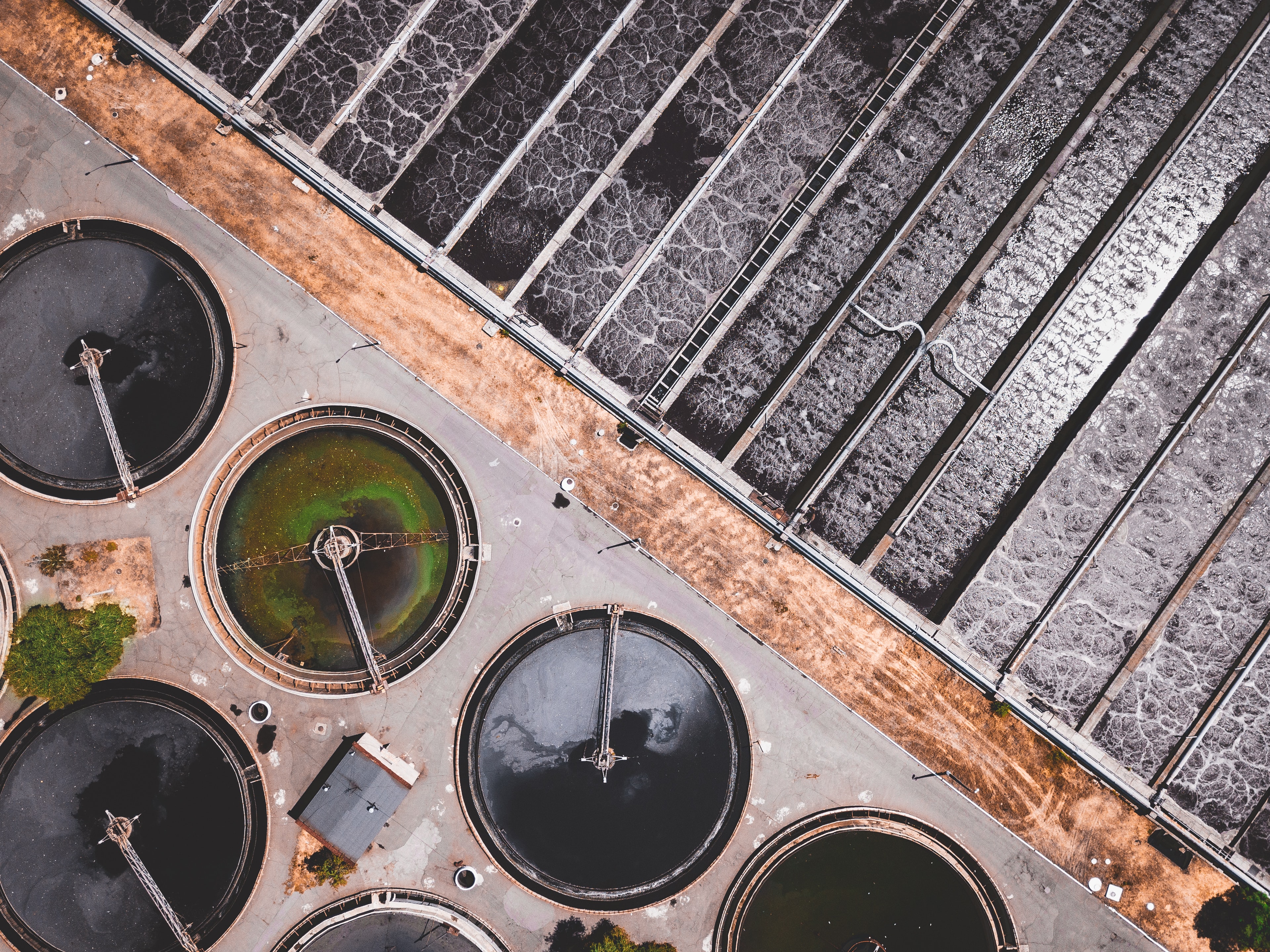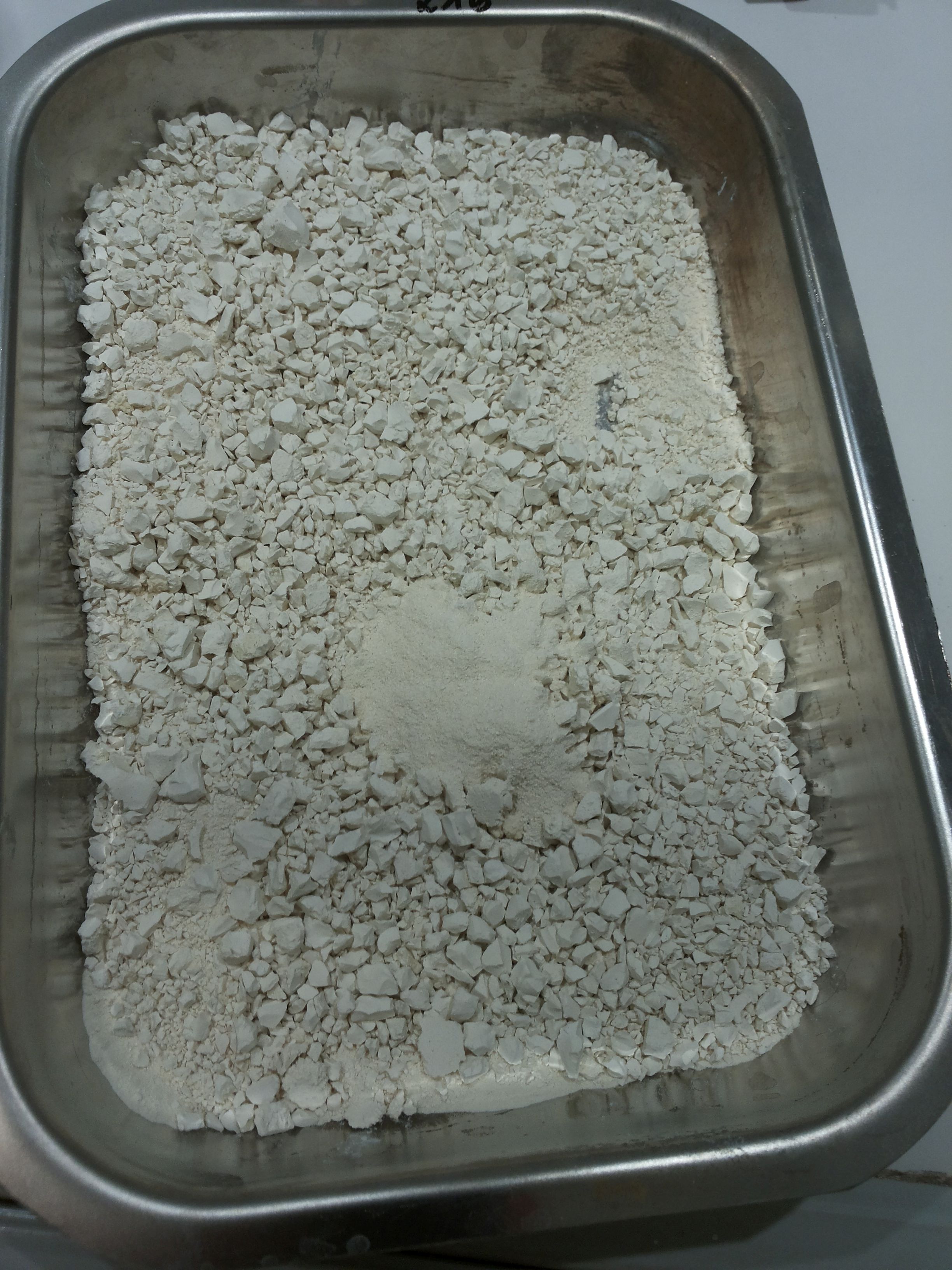Main navigation
Bacteria help to recycle phosphorus
Biotechnology for the bioeconomy: in something known as the P-bac process, sulphur bacteria extract phosphorus from sewage sludge ash. Phosphorus is one of the key building blocks of life and an essential nutrient for plant growth. When there is not enough phosphorus in the soil, farmers apply it via organic or mineral fertilisers.

The phosphorus contained in fertilisers is discharged into the wastewater via crops, food and excretions. It is precipitated in sewage treatment plants and eventually accumulates in sewage sludge. Sewage sludge has long been used as a fertiliser on fields. However, in addition to valuable minerals such as phosphorus, it also contains contaminants such as heavy metals, pharmaceuticals and potentially pathogenic microorganisms, as well as nitrogen, which can cause overfertilisation and therefore should not end up on fields. So what should we do with sewage sludge? Once it is dried, sewage sludge can be incinerated and valuable phosphorus recovered from the ashes. The P-bac process is a new and effective method to do just this, using acid-resistant bacteria. The process was developed by Fritzmeier Umwelttechnik GmbH, an SME (small- and medium-sized enterprise) based in Helfendorf, Bavaria, and was scaled up as part of the PRiL - Phosphorus Recovery and Development of Intelligent Slow Release Fertilisers project funded by the German Federal Ministry of Food and Agriculture in cooperation with the Fraunhofer Institute for Material Cycles and Resource Strategy IWKS in Alzenau/Hanau and other project partners.
Waste Sewage Sludge Ordinance
Mono-incineration plants
Phosphorus reserves worldwide
How the P-bac process works
Bacteria of the genus Acidithiobacillus occur naturally in ore-rich layers of rock. Their metabolism requires sulphur, from which they produce sulphuric acid via oxidation processes and by fixing CO2. The microbes only really feel at home in the resulting caustic acid broth with a pH value of less than one. These sulphur bacteria have already been used for some time in a process called bioleaching (= biological leaching) in mining, for example to dissolve iron-sulphur minerals such as pyrite.
Bioleaching separates phosphorus from heavy metals

Bioleaching is a well-known process in which water-insoluble metals such as copper, zinc, nickel or gold from ore are converted into water-soluble salts with the aid of microorganisms. The P-bac process works in a similar way to remove phosphorus from sewage sludge ash with the help of a special mixed bacterial culture. All that is required is elemental sulphur and minerals such as iron, which are contained in the ash. The bioleaching liquid consisting of bacteria and sulphur is prepared in a reactor vessel, the sewage sludge ash is added and the whole mixture is homogenised. The phosphorus is released into the solution within a short time and the ashes settle.
The bacteria in the solution oxidise iron by binding phosphorus, which results in iron phosphate. The iron phosphate ions are deposited in the bacterial cells or adhere to the cell membranes. In the next step, the bacteria and their phosphate load are separated by sedimentation and filtration - a large proportion of the heavy metal pollutants remain in the solution, resulting in a raw phosphate product that is virtually free of heavy metals. A great deal of the energy and water used in the process cycle can be saved by recycling three quarters of the process water. During microbial conversion, a membrane filters only the accumulated sulphate (the bacteria oxidise elemental sulphur to sulphate) from the process water after a few passages. "The process is robust, energy-saving and environmentally friendly", says Birgit Lewandowski, former head of the biotechnology division at Fritzmeier Umwelttechnik. The process results in residual ash, which can be reused, for example, as cement replacement material, and in a phosphate raw product, i.e. a white powder that contains phosphate. Between 80 and 100 percent of the phosphorus contained in the sewage sludge ash can be recovered using this innovative process.
From recyclate to fertiliser
The suitability of recycled phosphorus as a fertiliser depends mainly on the plant availability of phosphorus, i.e. how easily the element can be absorbed by plants. Lars Zeggel, project manager at the Fraunhofer IWKS, has investigated this. He found that while the phosphorus in sewage sludge ashes can barely be absorbed by plants, the phosphorus recovered from the ash with the P-bac process achieves a very good value, corresponding to about 50 percent of the plant availability of a commercially available phosphate fertiliser. As the phosphate powder also meets all the requirements of the EU Fertiliser Regulation, it is feasible to apply it directly to the field, as was previously done with so-called Thomas meal (a phosphate-rich fertiliser that was produced as a by-product of iron and steel production). However, modern agricultural technology requires granulated fertilisers, i.e. small fertiliser pellets that are easier to handle and can be spread more easily on the field. Fritzmeier Umwelttechnik GmbH is now looking for industrial partners interested in developing an appropriate process and marketing the recycled fertiliser.
Fossil raw materials are even cheaper
The Fraunhofer IWKS has also conducted a feasibility study to assess the cost-effectiveness of the process. According to this analysis, one kilo of phosphate obtained using the innovative process costs around two euros. This makes it two to three times cheaper than phosphate produced with similar, purely chemical processes, but still three times more expensive than the cost of primary phosphorus on the world market. Biotechnologist Lewandowski regards this as a fundamental problem: the question is how the recovered phosphorus can be marketed, as no financial incentives are available for fertiliser producers. "This will probably result in the additional costs being passed on to wastewater charges, similar to what has already been done in Switzerland", says Lewandowski.
The phosphorus recycling project PRiL ran for 30 months from August 2016 to October 2019. It was funded by the German Federal Ministry of Food and Agriculture (BMEL) based on a resolution from the German Bundestag. The project was managed by the Federal Agency for Agriculture and Food (BLE) as part of a business innovation programme.